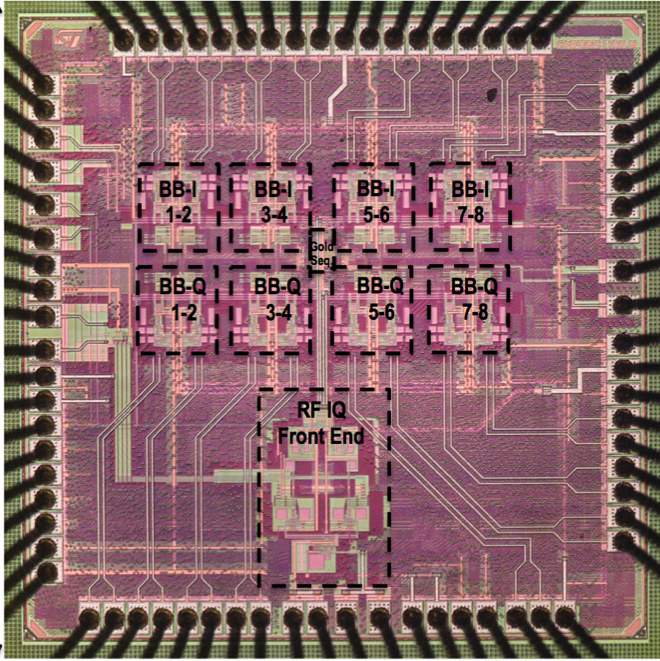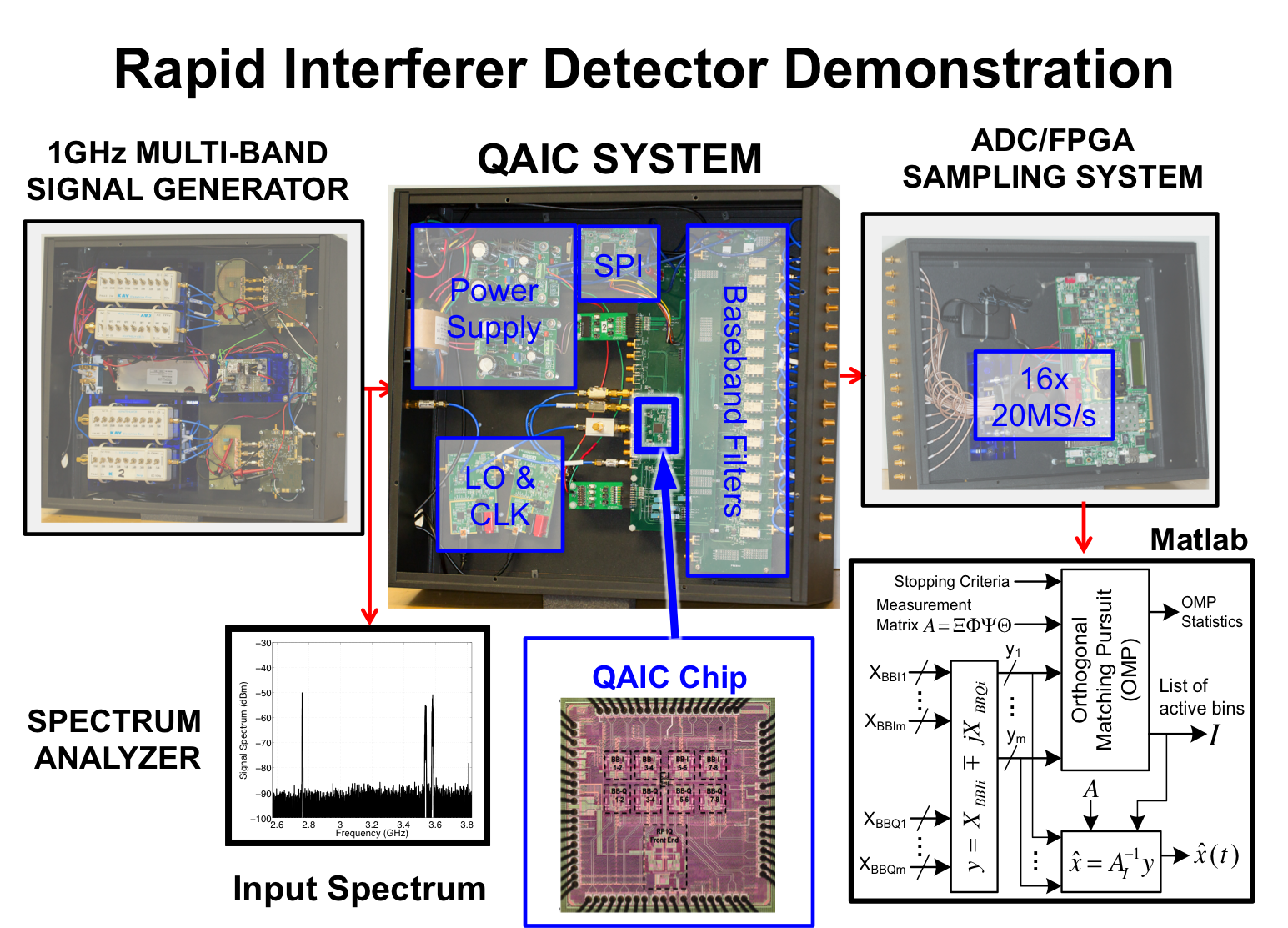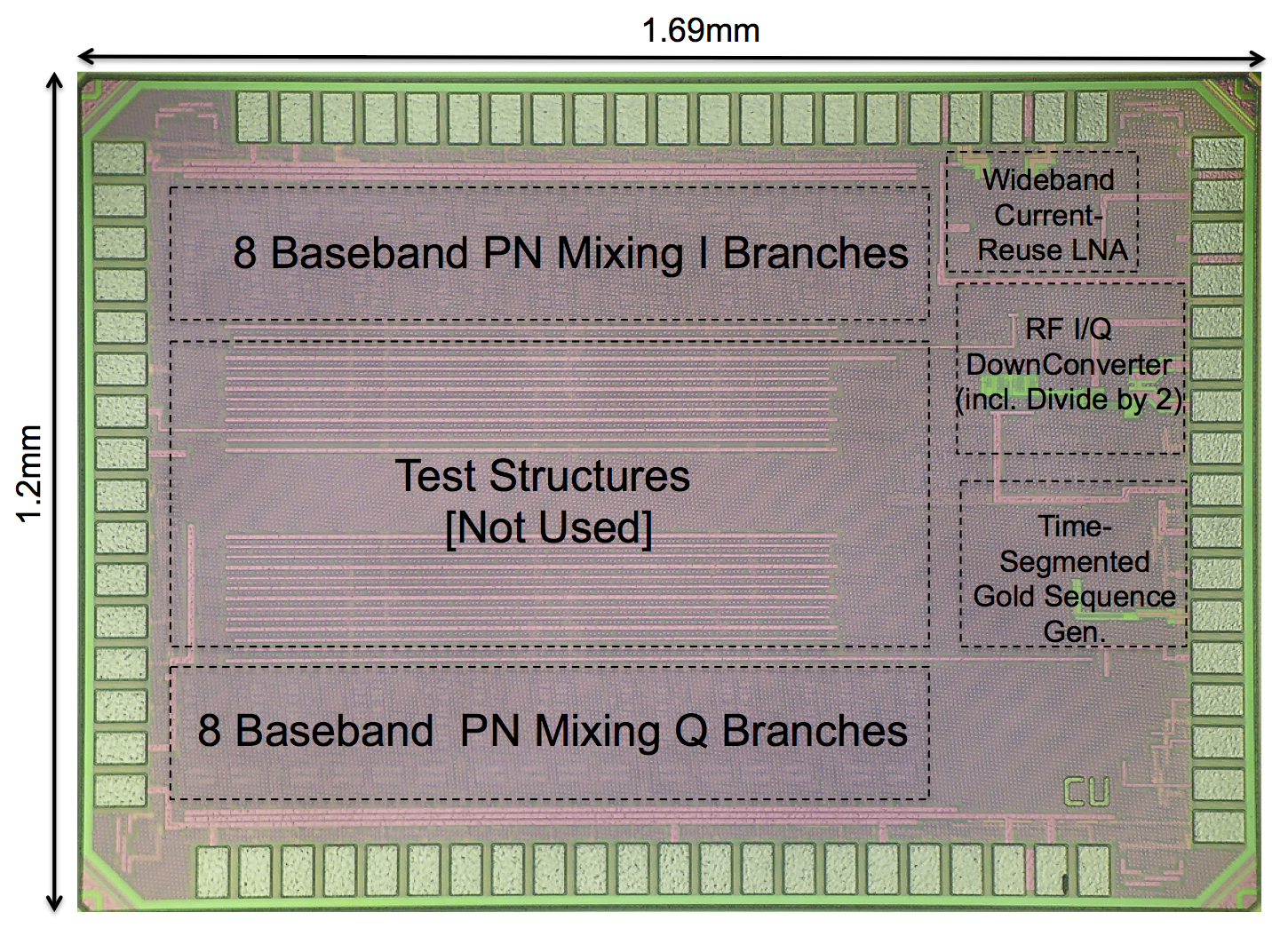Research
Dr. Yazicigil's research vision is to develop system solutions at the intersection of electronics, security, embedded signal processing, sensing and communications for future energy-constrained applications. She develops unique application-driven system solutions that would not be possible through isolated investigation. Her approach highlights cross-layer optimization from circuits to protocols to drastically improve energy efficiency and obtain higher performance.
Wireless Security for Internet of Things
Collaborators: Phillip Nadeau, Daniel Richman, Chiraag Juvekar, Professor Anantha P. Chandrakasan
Security is the most important consideration in future low-power wireless networks focused on connecting edge devices. It has been shown that life critical implantable devices controlled over a wireless link can now be attacked, motivating the need to establish end-to-end secure system solutions. We are currently co-developing wireless protocols and secure RF radio architectures that provide unique security in physical layer to enable new security paradigms for the next generation of wireless connectivity.
Compressive Sampling as Enabling Solutions for Rapid Wideband RF Spectrum Sensing in Emerging Cognitive Radio Systems
Collaborators: Tanbir Haque, Professor John Wright (co-advisor), Professor Peter R. Kinget (advisor)
Compressive sampling has been extensively used for image reconstruction. It has been demonstrated by Rice University that a "Single-Pixel Camera" that exploits compressive sampling can obtain an image with less measurements than the number of pixels under prior condition of sparsity.
In Dr. Yazicigil's PhD research work, she exploited the compressive sampling to take a "snapshot" of the spectrum. Compressive sampling allows the designers to build very fast, low power and wideband spectrum sensors with lower overhead under the prior assumption of sparsity.
Wideband, Energy-Efficient and Rapid Interferer Detectors with Compressed-Sampling Quadrature Analog-to-Information Converters
Spectrum is the "lifeblood" of the future wireless networks and the "data storm" driven by the emerging technologies like Internet of Things, video over wireless will lead to a pressing "artificial" spectrum scarcity. Future “smart” terminals will need to quickly assess the spectrum usage and opportunistically use the available spectrum to overcome this challenge. Such "smart" terminals require spectrum sensing for interferer avoidance. The integrated interferer detectors need to be fast, wideband and energy efficient.
Band-pass compressed-sampling interferer detectors with a Quadrature Analog-to-Information Converter (QAIC) offers a novel approach to attack the search for the quick detection of interferers in a wideband spectrum in an energy efficient way. Our first band-pass CS QAIC system demonstration senses a wideband 1GHz span with a 20MHz resolution bandwidth in 4.4μsecs, offering 50x faster scan time compared to traditional sweeping spectrum scanners and 6.3x compressed aggregate sampling rate compared to traditional concurrent Nyquist-rate approaches. Such detectors are key cornerstones for future multi-tiered shared spectrum access solutions with dynamic spectrum sensing.
Related Publications: JSSC2015 (Invited paper), ISSCC 2015, TCAS-I 2015, ISCAS 2016
 IEEE ISSCC 2015, IEEE JSSC 2015 (invited paper)
IEEE ISSCC 2015, IEEE JSSC 2015 (invited paper)
 IEEE ISSCC 2015, IEEE JSSC 2015 (invited paper)
IEEE ISSCC 2015, IEEE JSSC 2015 (invited paper)
CS architectures rely on signal sparsity and the number of CS hardware branches is proportional to the number of signals to be detected. The key remaining challenge when implementing CS analog-to-information converters with a fixed number of hardware branches is to how to make them work reliably under changing sparsity conditions. Our second band-pass CS time-segmented QAIC system extends its interferer detection capability through time segmentation and adaptive thresholding in dynamic spectrum environments without any additional silicon area.
Related Publications: RFIC 2016 , Asilomar 2016 (invited paper), TCAS-I 2017
 IEEE RFIC 2016
IEEE RFIC 2016